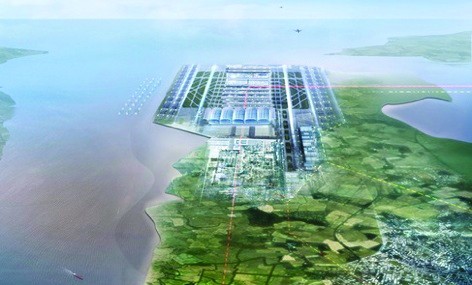A cool drizzle is falling over W1, an indication that the inactivity of summer is almost behind us and that a full season of industry related events awaits.
Well that might be the case come mid-September but in the meantime we find ourselves picking amongst the wreckage of the summer slow down for engineering-related events.
There may not be too many to choose from this week but a report due this week looks set to generate a ripple controversy and it centres around the imminent decision on whether to take forward plans for a hub airport in the inner Thames Estuary.

A final report on how to best utilise the nation’s airport capacity is not due until after the next general election in May 2015 but an interim report from the Airports Commission will this week marks the conclusion of its consultation on the short-listed options, including a third runway at Heathrow, lengthening an existing runway at the airport, and a new runway at Gatwick.
The CBI has weighed into the debate, reiterating the need for Britain to have a single hub airport with spare capacity to add new routes. This in turn would help the UK maintain long-term sustainable growth and capitalise on export opportunities in emerging, high-growth economies.
Research by Steer Davies Gleave for the CBI shows that hub airports serve on average nearly three times as many destinations as point-to-point airports and deliver almost twice as many flights on the routes that are served.
This point became apparent this morning whilst I was browsing City AM and Metro, both of which contain full-page adverts from the owners of Heathrow, who state that by 2050 nearly half of global GDP will be derived from emerging markets in Asia and South America.
‘British exporters desperately need direct access to all these burgeoning markets,’ the advert says. ‘While Britain wrings its hands over the site of a new runaway, our competitors in France, Germany and The Netherlands are rubbing theirs. They have the hub capacity. They have the will to grow it. And they have the wholehearted government support to take what could be Britain’s.’
Katja Hall, CBI deputy director-general, adds: ‘We need to see the Airports Commission deliver a strong case for new capacity and a clear schedule for delivery, and politicians to commit to spades in the ground by the end of the next Parliament.
‘With Heathrow full and the UK slipping behind in the race for new connectivity, it is essential that the Airports Commission delivers a solution that addresses the ticking time bomb of our lack of spare hub capacity.’
CBI is calling on the Airports Commission to:
- make a strong political and economic case for action in the next Parliament, with a clear schedule that delivers spades in the ground by 2020.
- set out clearly the type of capacity required to maximise the UK’s connections with the rest of the world. The CBI recommends hub capacity at a single location as the best way of boosting connectivity with new markets.
- set out a compelling narrative for how to bolster competition by maximising links across the UK, developing an action plan to make the best use of our existing capacity by improving surface access.
- give politicians a clear timetable for the consideration of additional capacity beyond 2030 to prevent another capacity crunch in the future.
‘The issue has been in the long grass for long enough,’ continues the plea from Heathrow. ‘If we want Britain to get on, let’s get on with it.’
Of course, The Engineer has keenly followed the ongoing debate that follows the expansion of Britain’s air capacity, much as which can be found here.




Project to investigate hybrid approach to titanium manufacturing
What is this a hybrid of? Superplastic forming tends to be performed slowly as otherwise the behaviour is the hot creep that typifies hot...